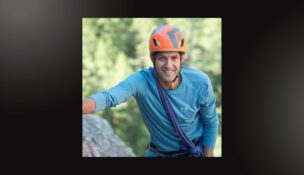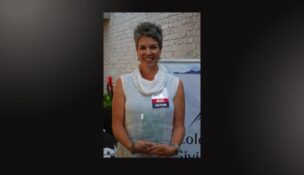Sports-Media Entrepreneur Brandon Spano Takes On a Crowded Market
Competing in a fierce Denver sports-media market
Stewart Schley //February 1, 2018//


Sports-Media Entrepreneur Brandon Spano Takes On a Crowded Market
Competing in a fierce Denver sports-media market
Stewart Schley //February 1, 2018//

“Student body left” is a feared football formation that sends a phalanx of bodies hurtling forward as a unit, punishing everything in its path. During the late 1990s, it was the offensive strategy of choice for Lafayette’s Centaurus High School. Which meant that if you played outside linebacker for the opposing team, as Brandon Spano did for the Westminster High Warriors, “your life was pretty much going to be hell.”
Spano survived the Centaurus challenge by dint of a two-part strategy: Look for openings in the wall, and run faster than the other guys.
It’s an approach he’s repeating now as Spano’s media company aims to compete for subscriber payments and advertising budgets in a hotly competitive Denver sports-media market.
Spano’s creation is a BSN Denver, a multi-platform content destination that covers teams like the Broncos’ Aqib Talib covers wide receivers: closely and with keen interest. A mix of online articles, daily podcasts and a morning talk show are aimed at super-serving fans with team-centric coverage produced by a team of contributors, some of whom, like Avalanche beat writer and ex-Denver Post reporter Adrian Dater, are well-known. Spano thinks his enterprise can stand out by delivering “hyper-local” coverage with down-to-the-nubs reporting about the Colorado Rockies, the Broncos, the Avalanche and the Denver Nuggets. The thesis is that sports fans tend to gravitate toward specific teams rather than a waterfront appreciation of “sports” at large. It’s possible for Rockies fans, for example, to immerse themselves in BSN’s daily firehose of written articles, radio-style podcasts, mobile application content and social media interaction around the Major League Baseball team – while willfully ignoring that game they play on ice over at Pepsi Center.
The result is an unusually dense level of coverage reminiscent of the newspaper sports section of yesteryear, when lots of advertising translated to lots of column inches to fill. “In the last 10 days, we’ve done 11 pieces on the Rockies,” Spano pointed out over coffee recently. “And it’s December.”
Spano, 35, has been on the Denver sports-media scene since 2007, when he began cobbling together air time from local radio stations and blog space from publishers, which he then monetized by selling advertising time or space. He started BSN Denver in 2015 in a traditional web-publishing way: by publishing content, racking up numbers (600,000 unique visitors by the end of the year) and selling advertising placements.
In December, Spano was set to take a big risk by transforming the online and mobile application components of BSN’s business to a subscription-supported model that eschews advertising. For $4.99 a month or $34.99 annually, fans get original, team-specific content with no advertising intrusion. (BSN still maintains other ad-supported extensions in the form of daily team podcasts and its live morning weekday sports show.) If it sounds familiar as a business model, it is: On a national scale, the start-up online sports publication The Athletic is attempting a similar gambit by lining up recognized sports writers (baseball specialist Ken Rosenthal is the best known) to produce localized sports coverage supported purely by subscription payments.
Spano is undaunted. He thinks fierce team loyalties and a big-league market posture – Denver supports as many sports-radio stations as New York City, Spano points out – widen the overall opportunity for a variety of sports-media players.
Nate Lundy, another local sports-media veteran, agrees. In August, Lundy purchased Mile High Sports, a magazine publisher and digital media company, out of faith that there’s plenty of upside in the market. “It was an opportunity to take something that’s been amazing for the last 15 years but also has great potential to grow,” Lundy says. There’s backing for his sentiment: Industry researcher Borrell & Associates projects local advertising expenditures in the Denver market will rise 13 percent in 2018, to $1.9 billion. Online ad spending will make up the biggest share, accounting for $1.2 billion, Borrell thinks.
If that’s the case, Spano’s mix of subscriptions-plus-advertising might make for a sweet combination — not to mention a neat thematic progression. Spano started his sports-media career early, hawking football player cards with two friends from a makeshift operation at the intersection of Mississippi Avenue and Depew Street in Lakewood when he was in the fifth grade. In a way, BSN Denver is just the latest incarnation of a kid’s dream. The form factor has shifted to digital from physical. But the fundamental idea is still alive. And somewhere, some high school team is still running “student body left.”

























